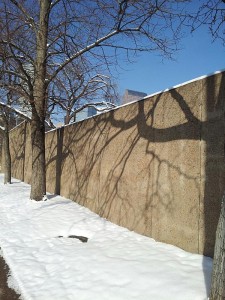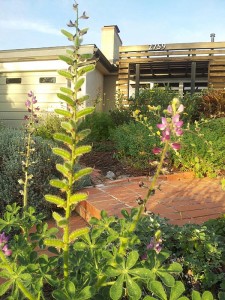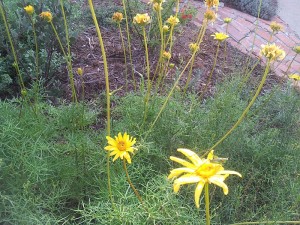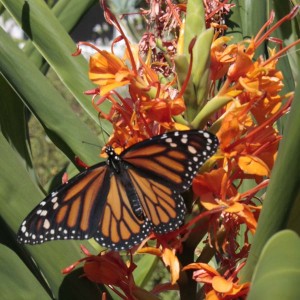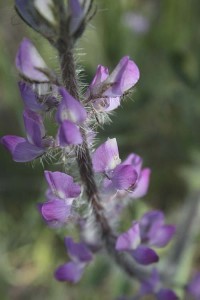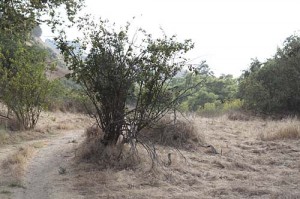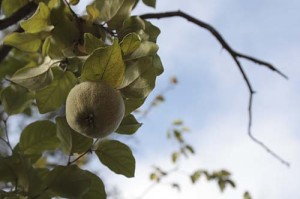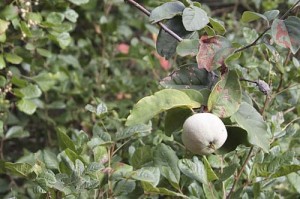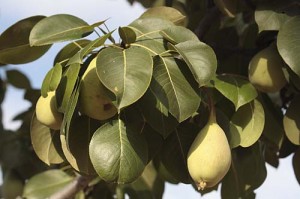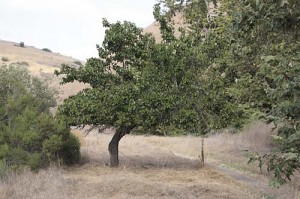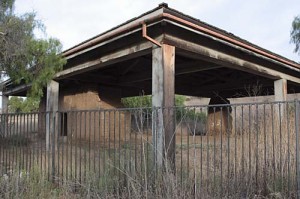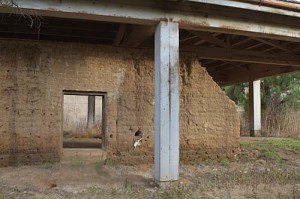
The native plant garden at San Diego’s Old Town State Historic Park occupies a gentle rise in the land on the north end of the park. The garden sits on the grounds of the Silvas-McCoy house, a modern reconstruction by the park service based on foundations excavated in 1995.
The house replicates an 1869 structure by Irish immigrant James McCoy. Previous to McCoy’s arrival the site was previously in the hands of Maria Eugenia Silvas, and the grounds also contain the foundations of two adobe structures that predate the McCoy house.
The park service, charged with interpreting the history of San Diego’s founding, decided between rebuilding the McCoy house or recreating the earlier adobes. Would they opt to tell the story of early Spanish settlement? Or that of later settlers? Or instead could they do something to interpret the area’s original inhabitants, the Kumeyaay, whose village of Koss’ai occupied the site, and whose tenure went back thousands of years? Choices like that are never without controversy, and you could make good arguments on all sides of the debate.
This was during a flurry of historic reconstruction in Old Town which turned this corner of the park into a construction zone. During the project I spotted one of the more amusing informational signs I’ve encountered, one that proclaimed a nearby patch of earth to be the “Future site of San Diego’s first city jail.” (Do you ever regret not having a camera along?)
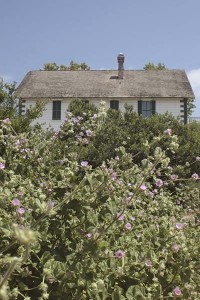
The native plant garden, like the Silvas-McCoy house, also participates in the park’s mission to provide historic context. The selection of plants reinforces the story the garden tells.
In the days of Silvas and McCoy the San Diego River flowed in front of this site. The plants that would have been found here would have been primarily riparian species. To tell that story, you’ll see stands of mugwort, sycamore, mulefat, coast live oak and willow featured on the grounds.
In the past, the river would sometimes empty into Mission Bay to the north, or into San Diego Bay to the south. The geographical indecisiveness of a meandering river works fine for the natural world, but poorly for a culture tied to private ownership of property. The current San Diego River has been forced into an engineered channel a quarter mile to the north and is no longer able to decide on its own where it would like to go. So, in addition to telling a story about the location of the river 150 years ago, the garden–a riparian plant community stranded hundreds of feet from the river that would have originally sustained it–to me speaks to notions of ownership of space and ideas about the control of nature. It’s not just another pretty garden.
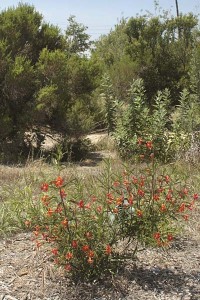
Of course, when you say “garden,” people do want to see pretty flowers. Above is chaparral mallow (Malacothamnus fasciculatus), and here’s the perky red monkey (Mimulus aurantiacus)…
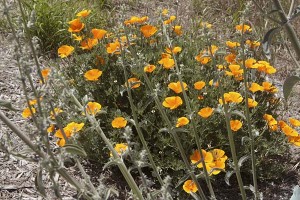
…and the ever-popular California state flower (Escholzia californica) in its most recognizable color form, with wands of white sage (Salvia apaiana) in front.
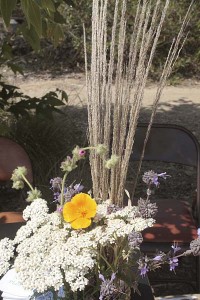
And here’s a bouquet of some of what was blooming.
The garden in its current state goes back only a little more than a year, when a group of local California Native Plant Society volunteers weeded the site and planted many of the plants. The garden hosted an open house on Saturday, and visitors got a chance to tour the site and get insights from ethnobotanist Richard Bugbee about traditional Kumeyaay uses of many of the plants in the garden.
For example did you know that young flowering stems of white sage were peeled and eaten raw? This is one of the most assertively aromatic of sages, but peeling the stems purportedly takes away the oil-producing glands and gives the stems a flavor something like celery. (Maybe “tastes like celery” is the botanical equivalent of the catch-all “tastes like chicken,” but I intend to find out the next time my plants need a haircut…) Future plans for the garden include signage on traditional Kumayaay uses of the plants growing there.

That’s ethnobotanist Richard Bugbee, second from the right in this photo, along with landscape architect Kay Stewart, far right, who was heavily involved in designing the garden. Next to Richard is Peter St. Clair who, along with the original donor to the native garden project, had the vision and persistence to have the garden in the first place. Peter also organizes the volunteer work crews that help maintain and shape the garden.
At not much over a year old, this is still a young garden. There are still areas to be cleared and plantings to be finalized, but the garden has good bones and occupies a fascinating location. It’s definitely a place to watch as it matures, and they’re always on the lookout for volunteers to help the process along. Sign me up!

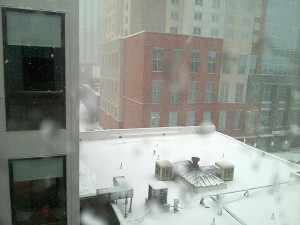
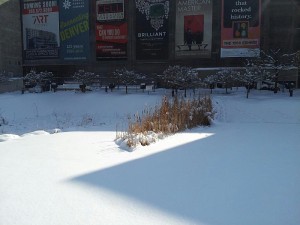 Denver often warms enough to melt some of the snow between storms, so what was on the ground was a nice light snow blanket, not the smothering white wooly layers much of the rest of the country has had to deal with.
Denver often warms enough to melt some of the snow between storms, so what was on the ground was a nice light snow blanket, not the smothering white wooly layers much of the rest of the country has had to deal with. 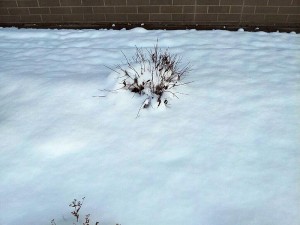 To this subtropical California it was all pretty exotic. So, plants that get frozen like this come back to tell about it? Sounds like an episode of The Walking Dead to me.
To this subtropical California it was all pretty exotic. So, plants that get frozen like this come back to tell about it? Sounds like an episode of The Walking Dead to me.